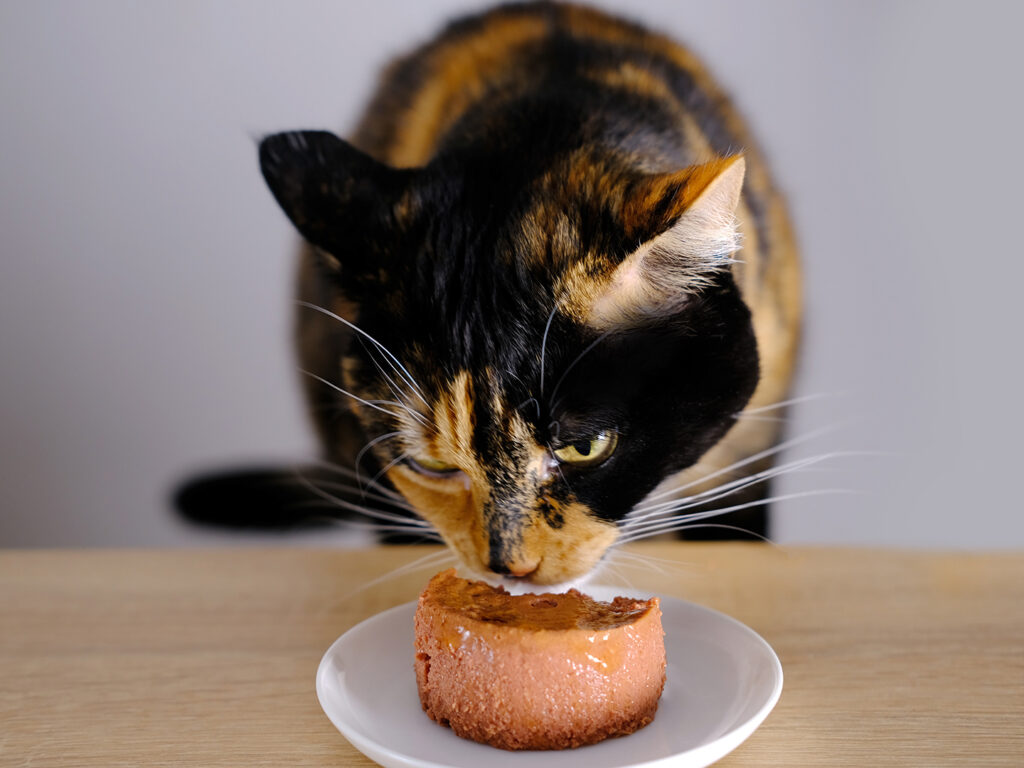Feline Feasts: Selecting The Best Food For Cats

Choosing the right food for cats can be a source of overwhelming stress for owners, as there are a multitude of options, yet a cat’s food directly impacts their health, well-being, and quality of life.
Dr. Audrey Cook, a professor at the Texas A&M School of Veterinary Medicine & Biomedical Sciences, explores factors that owners should consider when choosing between wet and dry cat food while emphasizing the importance of meeting nutritional needs no matter the type of food.
Health Benefits
A cat’s health can be a deciding factor when choosing a type of food.
According to Cook, wet food, in particular, is beneficial for managing and improving a cat’s urinary health.
“Wet food has more moisture, and this is a big advantage since most cats don’t drink enough water, setting them up for urinary tract issues,” she said. “In fact, there are several conditions for which wet food is preferred over dry, such as when a cat has kidney disease or bladder stones.”
For cats who need to lose or manage their weight, wet food can also be a viable dietary choice.
“Wet foods are often less energy dense, meaning that cats will have to take in more volume of food to get the same amount of calories,” Cook said. “So if you have a cat that tends to gain weight, they may be more content on wet food if you are limiting calories, simply because their stomach feels fuller.”
While wet food can promote healthy hydration levels and address certain health issues, adding dry food into the diet aligns more closely with a cat’s natural eating habits.
“Cats don’t like to have just two ‘meals’ a day because they are designed to eat about 12-20 times in a 24-hour period,” Cook explained. “It is also not hygienic or palatable (pleasant-tasting) to leave wet food out for hours, so using dry food along with the wet is often a very effective option. My own cat gets about 70% of her calories from canned food but also likes to nibble on dry. I can leave a small, measured amount of dry food out for her to snack on, but then I feed her a wet meal three or four times a day.”
Nutritional Needs And Preferences
Before purchasing cat food, however, Cook strongly suggests that owners should first prioritize the nutritional value of the food over the type of food.
“An owner is better off picking a well-established brand that can be trusted rather than thinking in terms of wet versus dry because the overall quality of wet and dry pet foods varies enormously based on actual ingredients and formulation, or the amount of protein, carbohydrates, and fat that the manufacturer puts in the food,” Cook explained. “I’d rather see a cat on high-quality dry food than poorly documented canned food.”
Owners should also take into consideration their cat’s preferences, such as texture and flavor, while ensuring their cat eats various types of high-quality food. Otherwise, because cats who do not like their food can develop health concerns, owners should always talk to their veterinarian about food options and issues.
“Feeding various flavors and brands from kittenhood onwards can be useful so that the cat learns to accept a range of diets and doesn’t become locked in to just one,” Cook said. “It can be very hard to introduce new food to a cat who has lived for years on one food. Cats who have lived on one brand of dry food for years will often not eat wet food; they may nibble at the wet food, but they won’t take in enough calories, losing weight quickly.”
If a cat continuously chooses not to eat, owners should consult with their veterinarian to rule out any potential health problems before offering more types of cat food.
“A cat not eating their food depends on if they are not feeling hungry or not liking that particular food,” Cook said. “Not hungry suggests a medical issue; not liking a food is just a personal choice.”
Understanding the differences between wet and dry food can encourage owners to make informed choices that meet their cat’s needs. Ultimately, a well-balanced and nutritious diet is key to ensuring a cat’s health and well-being.
Pet Talk is a service of the School of Veterinary Medicine & Biomedical Sciences, Texas A&M University. Stories can be viewed on the web at vetmed.tamu.edu/news/pet-talk. Suggestions for future topics may be directed to vmbs-editor@tamu.edu.


